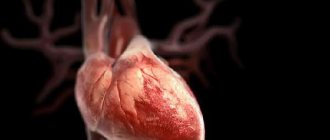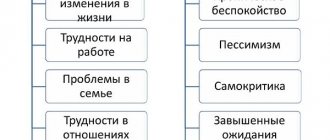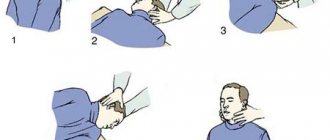Stress has become an integral part of our lives. If short-term shocks mobilize the body's mental and physical capabilities, then chronic stressful conditions can lead to burnout, depression, and also cause many diseases and poor health.
Very often, the fight against stress is energy-consuming and ineffective, since a person does not know or does not know how to use the basic methods of self-soothing. Breathing exercises will help you concentrate and return to the “here and now” state. Such a powerful tool as proper breathing allows you to get rid of obsessive thoughts, concentrate and achieve a state of balance.
Read in the article:
- Stress: causes, symptoms and consequences
- How to cope with stress?
- The essence and principles of breathing exercises
- Why do breathing exercises help relieve stress?
- Preparing to do breathing exercises
- Effective breathing techniques
- Additional benefits of breathing exercises
Breathing exercises can significantly improve the condition of the body. It is believed that breathing helps unite the body and mind, relax, relieve anxiety and stress, cope with insomnia and solve a number of other problems.
Stress: causes, symptoms and consequences
Stress is a condition in which the body uses all its reserves. This is how the reaction to various factors manifests itself.
A little stress can sometimes even be beneficial, as it triggers the release of adrenaline into the blood, which helps to cope with difficult situations. However, a prolonged stressful state has an extremely negative effect on the body, reduces immunity and causes mental problems.
Stress can be caused by a variety of situations:
conflicts, dissatisfaction with oneself or others, life in general, lack of proper rest, loneliness, etc. It is unrealistic to eliminate all factors, so sufficient attention should be paid to the prevention of such conditions and recovery from them.
Main symptoms
, indicating the presence of stress, are considered:
- irritability, attacks of anger for no apparent reason;
- attempts to avoid any communication;
- lethargy, passivity;
- increased fatigue;
- insomnia;
- panic attacks;
- tearfulness;
- nervous tic.
The list goes on and on, but stress manifests itself differently for everyone, so it is not always easy to recognize.
In addition, there is a condition with similar symptoms: burnout syndrome
. It manifests itself in loss of motivation, reluctance to do usual things, and a negative attitude towards them. Fatigue and signs of exhaustion quickly appear, there is a feeling of guilt and attempts to justify oneself. The syndrome may also be accompanied by physical manifestations: disturbances in the gastrointestinal tract, sleep problems and headaches.
In both situations, simply eliminating the symptoms is not enough. It is necessary to identify the causes of anxiety, fatigue and depression, and try to eliminate them, and if this is not possible, change your attitude.
How to cope with stress?
One of the most effective ways to prevent stress is a healthy lifestyle: proper nutrition, physical activity, and giving up bad habits play an important role in preventing stress.
Yoga, relaxation techniques and special breathing exercises for stress can help cope with stress. This complex includes breathing exercises that are performed in a certain sequence. However, it should be remembered that if performed incorrectly, the exercise can cause harm, so it is advisable to consult a doctor and choose a complex, taking into account the characteristics of the body.
The essence and principles of breathing exercises
To understand the essence and principles of breathing exercises, it is worth understanding the types of breathing itself. It happens:
- upper
, when the diaphragm practically does not tense, breathing occurs through the upper part of the chest; - medium
- air enters due to the expansion of the middle part of the chest, the diaphragm moves slightly downwards; - lower
– maximally lowered diaphragm and relaxed abdominal muscles; - complete
- a combination of all of the above types with maximum filling of the lungs with air; - reverse
, when when inhaling, the abdominal muscles tense and the diaphragm lowers.
There is also the option of delayed breathing, when there is a pause between inhalation and exhalation. This is the option used in yoga. The founders of this teaching believed that strength and energy fill the body while holding the breath.
Breathing exercises also come in various types, but the essence of any of them comes down to three points: artificial difficulty, holding and slowing down breathing. Thus, the benefits of exercise are based on weakening breathing.
Self-help for panic attacks: body
The most common recommendations and advice on self-help regarding the body are:
- intense exercise in the morning and (or) physical activity at the first signs of anxiety;
- long walks in the fresh air;
- deep calm breathing, or “diaphragmatic breathing”, or “belly breathing”, other types of breathing exercises;
- avoidance of alcohol and stimulants;
- cold and hot shower;
- sufficient sleep;
- plenty of warm drinks;
- medicines, herbal medicine, homeopathy;
- acupuncture.
Separately, it should be said about methods of targeted activation of the parasympathetic division of the ANS and reducing heart rate by inducing specific reflexes:
- according to Aschner - close your eyes and use the pads of your thumbs to press intensely on the eyeballs for 15–20 seconds;
- “diving dog” reflex - hold your breath and immerse your face in a basin of ice water;
- Valsalva reflex - strain at the height of a deep breath;
- induce a gag reflex (the urge to vomit, but not vomiting itself) - press on the root of the tongue.
Attention! These actions are contraindicated in the following conditions:
- severe chest pain;
- shortness of breath and cough with foamy sputum;
- severe weakness, decreased blood pressure;
- convulsions, disturbances of sensitivity and movement in the limbs.
- loss of consciousness.
These methods work “through the body” - they affect the autonomic nervous system through one of three mechanisms:
- Promote relaxation in its sympathetic department.
- Activate the parasympathetic department.
- Harmonize and stabilize their activities.
How some self-help methods affect the ANS
Click on the title to read the text
- For example, intense physical activity releases tension in the sympathetic part of the autonomic nervous system - it allows you to “blow off steam.”
- Deep breathing and inducing vagal reflexes stimulate the parasympathetic system, which is an antagonist to the sympathetic system, thus balancing it.
- Avoiding stimulants allows you to avoid excessive stress on the sympathetic department.
- A contrast shower balances both departments.
- Sufficient walks and sleep help restore the body's own strength and resources.
Why do breathing exercises help relieve stress?
Situations often arise in life that cause strong feelings and anxiety. This is just a stone's throw away from real stress, which becomes chronic over time. One of the simplest and most accessible ways to deal with stress is through special sets of breathing exercises.
Numerous studies have proven that breathing techniques really help relieve nervous tension, forget about insomnia and get rid of depression. With a conscious method of breathing, the heart rate slows down, which makes it possible to calm down and better control oneself, emotions and sensations.
Stress relief also occurs due to muscle relaxation, activation of the production of endorphins - “happiness hormones”, lowering blood pressure, and stimulating the functioning of the lymphatic system. Special exercises help restore your voice and recover from a cold.
Preparing to do breathing exercises
At first glance, using breathing techniques is very simple, but in fact some preparation is required. To begin, try concentrating on your own breathing and observing it. As soon as you think about the rhythm and depth of your breathing, you will immediately feel that it is changing.
In such a situation, the speed of inhalation and exhalation slows down, and the normal rhythm evens out. Usually we use only the upper abdomen and the area near the lower ribs when breathing. But breathing practices involve opening the whole body. To start:
- Choose a comfortable position (sitting or lying down).
- Place your hands so that your fingertips are in your lower abdomen.
- Try directing a few breaths there, expanding the abdominal area.
- Gradually increase the depth of inhalation.
- Relax your throat completely.
- Try to direct your breath to your spine, feel how the back of your torso fills with air and “deflates” as you exhale.
Even 5 minutes of such breathing helps cope with stress. To achieve a more noticeable effect, you should master and regularly perform special exercises.
Getting acquainted with breathing techniques should start with the simplest exercises. For example, immediately after waking up, sit up in bed and close your eyes. With your mouth open, take 3 loud breaths in and out, trying to feel the contraction of your abdominal muscles. Imagine that you are breathing on a mirror so that it fogs up. Inhale and exhale through your nose for a few more minutes.
Pay attention to how you breathe while concentrating, when you are very nervous. At such moments, breathing becomes intermittent and shallow. To cope with stress, inhale through your nose, hold your breath for a few moments, and exhale.
Top 3 neurotic conditions
In the ranking of neuroses, neurasthenia is in first place. This is when “I want to, but I can’t, because nothing works out and at the same time I’m very tired.” This state is accompanied by constant replaying in thoughts of certain events, accompanied by a sleepy state.
This is followed by obsessive-compulsive neurosis, which experts classify as an anxiety-phobic disorder. A person worries whether he forgot to turn off the water, lock the door, or feed the cat. For this type of disorder. A person can harm himself or cause physical injury.
The third type of neurosis is hysterical neurosis. Hysterical neurosis is caused by the internal conflict “I want, but they don’t give it to me.” A person in public may demonstratively begin to cut his hands, he may even develop deafness or blindness, so much does he want to draw attention to himself.
There are other types of neurotic conditions. By the way, a midlife crisis is also a neurosis, which psychologists call noogenic or existential neurosis.
It is worth noting that with any type of neurosis, the first thing that suffers is the quality of a person’s personal life, his family, work and external environment.
Effective breathing techniques
There are many stress-relieving exercises based on breathing techniques. You can try different methods and choose those that best affect your emotional state and give the most tangible effect:
- Diaphragmatic breathing
- Lying on your back, place your palms on your stomach and take a deep breath through your nose. Concentrate on the breathing process and the anterior abdominal wall. Exhale long through your mouth, pressing your palms onto your stomach. - While sitting, lying on your back or standing, inhale for 3 counts, hold your breath for 1-2 seconds, exhale for 7 counts.
- Sitting on a chair, close one nostril with your thumb, inhale slowly through the other, pause for a second and exhale. Repeat the cycle with the other nostril.
- While lying down, place your hand on your stomach and inhale slowly through your nose, feeling the abdominal wall rise. Push the air out completely by contracting your abdominal muscles.
- Inhale and exhale through your nose as quickly as possible, keeping your mouth closed.
- Find a square-shaped object. Look at its upper left corner and inhale, then at the upper right corner - hold your breath. Look at the lower right corner and exhale, look at the lower left corner - relax and smile.
If signs of dizziness appear, you should stop exercising and take a break. If you do the exercises regularly, over time your dizziness will stop.
How else can you activate the parasympathetic system?
· Meditation.
Scientifically speaking, meditation is a mental action aimed at bringing the psyche into a state of deep concentration. Many scientists have long viewed meditation critically, but now there is evidence that it increases the parts of the brain responsible for the production of the happy hormone dopamine. In addition, correctly performed practices allow you to slow down, release tension in the body, and reduce the level of anxiety and anxiety.
· Yoga.
There are countless types of yoga. Among others is Sudarshan Kriya Yoga, which is considered especially useful for relieving anxiety, stress, and insomnia. To experience its effect for yourself, try this exercise for a few minutes:
- Turn on your favorite relaxing music (the sounds of the sea or the sound of the wind may be suitable)
- Close one nostril with your thumb.
- Inhale slowly through the second nostril for 5 seconds.
- Release the first nostril, close the second and exhale slowly.
Repeat for at least 7-10 rounds.
· Massage of active biological points:
- between the eyebrows;
- on the wrist;
- in the hollow between the index finger and thumb.
Additional benefits of breathing exercises
Breathing exercises not only help fight stress. They activate lung ventilation, reduce blood acidity, and this causes additional blood flow to the brain. As a result, concentration improves and a feeling of calm appears.
Such techniques are worth mastering for people who have sleep problems. For example, in a lying position, with one hand on your chest and the other on your stomach, you need to inhale through your nose for 4 counts. At the same time, it is important to ensure that when you inhale, it is not the chest that rises, but the anterior abdominal wall. Then you need to take a few regular breaths and exhale and repeat the exercise.
The benefits of various types of breathing techniques have been known since ancient times. Special exercises help cope with anxiety and insomnia and other symptoms of stress. But you need to perform such exercises correctly and regularly in order to feel their positive effects.
Belly breathing
Belly breathing is also called diaphragmatic and abdominal breathing. If you paid attention, children initially breathe naturally using their stomachs, but tension and negative situations force them to get rid of the correct technique in favor of chest breathing.
During stress, adrenaline is released into the blood, blood pressure and glucose levels increase, fat breakdown begins, blood is directed towards the brain and muscles, the chest contracts, breathing becomes shallow, fast, and intermittent. When you experience these physiological processes, you should immediately take advantage of the solution to the problem by breathing with your stomach.
In order to feel the work of the diaphragm, follow a number of simple steps:
- Sit or lie down in a comfortable, relaxed position.
- Place your left hand on your chest and your right hand on your stomach.
- Exhale slowly through your mouth.
- Then also inhale slowly through your nose so that your stomach rises above your chest.
- As you exhale, pull your stomach in. The chest should remain motionless when inhaling and exhaling.
Start practicing mindful breathing 1-2 times a day: in the morning before you want to get out of bed, and in the evening before going to bed.








